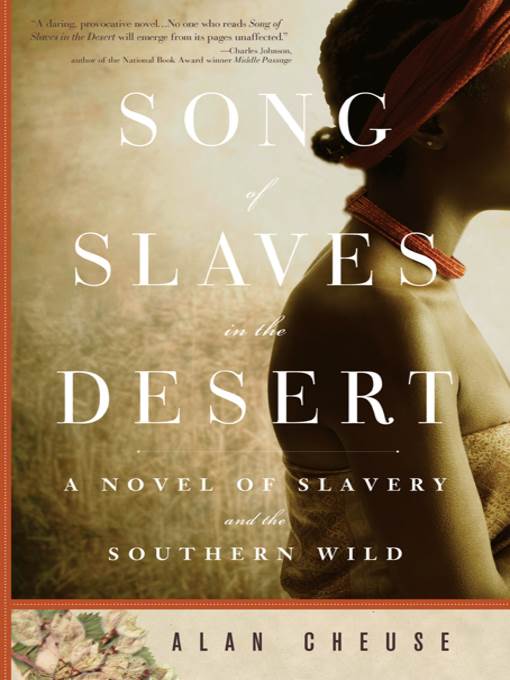
Song of Slaves in the Desert
کتاب های مرتبط
- اطلاعات
- نقد و بررسی
- دیدگاه کاربران
نقد و بررسی

December 20, 2010
Cheuse's busy follow-up to To Catch the Lightning reaches frantically in multiple directions but lacks a center of narrative gravity, resulting in a florid and off-kilter tale of slavery and forbidden love. Nathaniel Pereira, son of a New York Jewish merchant, gets dispatched to revive an uncle's South Carolina plantation, but his story is derailed by the interspersed accounts of several generations of women driven from slavery in Timbuktu to bondage in the United States. On a slave voyage, the brutality is as vivid as the prose is lurid ("What happened next, we can never truly know, unless we find ourselves forced into the immediate degradation sometimes suffered by the victim, usually female, when man turns beast and instinct—raw, foul, animal, devilish, destructive instinct—overpowers her"), and once the plantation slave Liza becomes an object of purplish desire for Nathaniel (a "tincture of desire now flavoring the spittle that we mingled in our mouths"), readers will realize that things cannot end well. After the convoluted story finds its way to a fiery conclusion, Cheuse tacks on a rushed and tidy resolution that undermines the novel's strongest feature: its depiction of the horrors of slavery.

Starred review from January 15, 2011
An imaginative, multigenerational exploration of the world of Southern slavery in the closing days of the "peculiar institution."
The Jews, famously, knew slavery in Egypt. Some of them knew what it was like to drive slaves, too, whence the premise of this latest novel by NPR commentator and writer Cheuse (To Catch the Lightning, 2008, etc.). Nathaniel Pereira, of Sephardic/Dutch descent and a proud New Yorker, is dreaming of his grand tour to the Continent when fate intervenes in the form of some necessary business, when his father dispatches him to the South to check on the family holdings in not cotton or tobacco but rice, "Southern rice to feed the belly of the northern nation." Ominously but usefully, father then provides his young son with a pistol. The 1,000-acre piedmont plantation in question is big enough to hide all kinds of mystery, and there's plenty to be had, not least because—well, let us say that bloodlines have become a bit confused over the generations. Nathaniel himself falls sway to the charms of an enchanting resident of the plantation, who, though enslaved, exercises plenty of influence over the place; but even that is not enough to ward off the inevitable antebellum decadence. Nathaniel is more thoughtful than most commercial travelers, quick to note ironies (as when Cheuse cleverly sets him to thinking of the problem of free will) and beset with existential questions suitable to a Hamlet: Is it moral to profit from slavery, even if from afar? Is blood thicker than water? Cheuse owes obvious debts to Herman Melville and his generation ("Call me Ishmael," indeed), less obvious ones to the likes of Frederick Busch, William Styron and perhaps even Boccaccio; like all of them, he imagines whole, self-contained worlds, in this case the claustrophobic world of the plantation South and its whispers of miscegenation and incest—powerful stuff with which to pepper any story, particular in skillful hands such as these.
A complex, richly detailed story, which reaches an unexpected conclusion that, among other things, is likely to make the reader thirsty.
(COPYRIGHT (2011) KIRKUS REVIEWS/NIELSEN BUSINESS MEDIA, INC. ALL RIGHTS RESERVED.)

February 1, 2011
In his latest novel, Cheuse (To Catch the Lightning) covers an extensive swath of history, from Australopithecus walking though volcanic ash up to 19th-century America. He manages this through intertwining story lines. One traces the seemingly timeless journey from Timbuktu to other parts of West Africa of several generations of African women caught in the slave trade. The other introduces us to a family of Jewish slave-holding plantation owners outside Charleston, SC, who buy an African woman from that lineage at the slave market. A young scion of the New York branch of the family visits the plantation and falls in love with the woman's daughter, a beautiful slave girl named Liza. Ultimately, Liza finds her way to freedom and her son writes the journal that ties the whole family narrative together. VERDICT With its broad scope and portentous 19th-century tone, the novel's many characters seem more symbolic than realistic. Still, Cheuse's depiction of the horrific slave ship passage to America is worth the price of admission.--Reba Leiding, James Madison Univ. Lib., Harrisonburg, VA
Copyright 2011 Library Journal, LLC Used with permission.

























دیدگاه کاربران